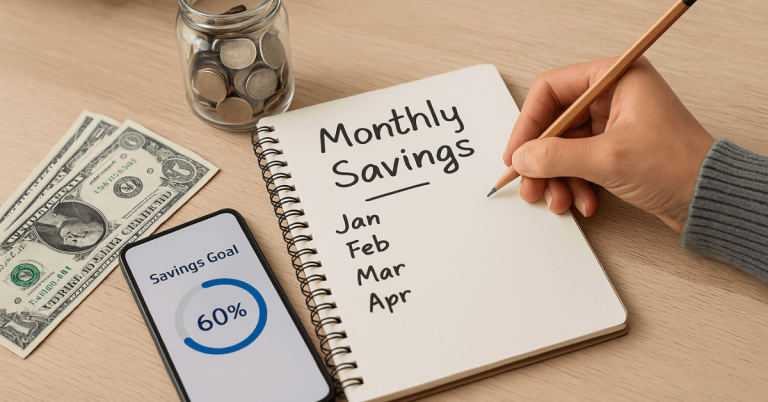Learning how to manage your income effectively is the foundation of financial stability. You can plan expenses using the 50/30/20 rule to create a clear structure that keeps your budget balanced.
This method divides your income into needs, wants, and savings, ensuring that every dollar has a purpose. It’s simple, adaptable, and suitable for almost any income level.
Understanding the Basics
Before applying the rule, it’s important to understand what it represents. The 50/30/20 rule divides your after-tax income into three parts: 50% for needs, 30% for wants, and 20% for savings or debt repayment.
This method promotes balance between living comfortably and securing your future. It provides flexibility while helping you maintain control over spending.
What Each Percentage Means?
Each percentage has a specific purpose that supports your overall financial health. Needs include essentials like housing, groceries, and transportation.
Wants refer to lifestyle choices such as dining out or entertainment. The savings portion strengthens your financial safety net and helps you reduce debt faster.

Why the 50/30/20 Rule Works?
The method works because it focuses on simplicity and discipline. Instead of tracking every transaction, you categorize your expenses broadly.
This approach prevents confusion and creates an easy routine. Over time, it builds awareness and encourages consistent money management.
How to Apply the 50/30/20 Rule?
Start by knowing exactly how much you earn after taxes each month. Next, allocate portions of your income to the three categories based on the rule.
Make sure your spending reflects real priorities instead of short-term desires. Adjust percentages as needed, especially when your income changes.
Step 1: Calculate Your Net Income
Use your take-home pay as the foundation for all budgeting calculations. Include only consistent sources of income like salaries or freelance work.
Avoid counting bonuses or irregular income unless they are predictable. This ensures your plan remains realistic and sustainable.
Step 2: Identify Needs and Wants
Differentiate between what you truly need and what you simply want. Needs include rent, utilities, insurance, and groceries.
Wants may include subscriptions, leisure activities, or luxury items. Recognizing this difference keeps your budget disciplined and prevents unnecessary spending.
Step 3: Set Aside Savings and Debt Payments
Your last 20% should focus on financial growth and protection. Allocate funds to emergency savings, investment accounts, or debt repayment. If you have multiple debts, prioritize those with the highest interest rates. Automatic transfers help maintain consistency and remove the temptation to spend.
Breaking Down the 50%: Managing Essential Needs
Essential needs are non-negotiable expenses required for daily living. Keeping these costs under control helps prevent debt accumulation and ensures stability.
This part of the budget typically covers housing, food, healthcare, and transportation. Keeping needs within 50% may require adjusting your lifestyle or relocating to more affordable options.
Housing and Utilities
Rent or mortgage should never consume most of your income. Ideally, housing costs should stay within 25–30% of your total take-home pay.
Add utilities such as water, gas, and electricity within this limit. Tracking bills helps identify areas for savings, like reducing energy usage.
Groceries and Transportation
Plan meals and stick to a shopping list to avoid overspending. For transportation, use public transit when possible or carpool to reduce fuel and maintenance costs.
Keep both categories consistent with your financial goals. Over time, small adjustments result in meaningful savings.
The 30%: Spending on Wants
Wants make life enjoyable, but they should stay in balance. This category represents expenses that are not essential but bring personal satisfaction.
Limiting these costs helps you stay financially secure without sacrificing happiness. The key is moderation and awareness.
Tracking and Limiting Wants
List your wants and rank them by importance. Remove or reduce the least valuable ones each month.
Use mobile apps or bank tools to monitor your spending habits. Having a clear view of where your money goes encourages smarter choices.
Examples of Responsible “Wants”
Healthy leisure activities, occasional dining out, or travel savings can fit within this category. The goal is not total restriction but controlled enjoyment.
You can reward yourself while maintaining balance. Consistency matters more than perfection in long-term budgeting.
The 20%: Savings and Debt Repayment
This final category shapes your financial future. Setting aside 20% each month builds security and peace of mind.
It supports your emergency fund, future investments, or debt elimination. Prioritizing this area ensures financial independence over time.
Building Emergency Savings
An emergency fund should cover at least three to six months of essential expenses. This buffer prevents financial stress during unexpected events.
Save gradually if necessary, but stay consistent. Automating transfers makes this habit easier to maintain.
Paying Off Debt Efficiently
Focus on clearing high-interest loans first, like credit cards. Consider consolidating debts for easier tracking and lower interest rates.
Celebrate progress to stay motivated. Every reduction improves your long-term financial freedom.

Adapting the Rule to Your Situation
The 50/30/20 rule is flexible, not rigid. It can be adjusted based on income level, location, and financial goals.
People in high-cost cities might shift to 60/20/20, prioritizing essentials. Freelancers or irregular earners can adapt the percentages monthly to reflect variable income.
- Students: Focus on saving smaller amounts while learning budgeting discipline.
- Families: Allocate more toward needs and childcare but maintain a savings habit.
- Retirees: Reduce wants and focus on long-term medical or insurance stability.
Flexibility ensures the rule stays useful regardless of personal circumstances.
Tools to Help You Budget
Technology simplifies the budgeting process. Apps and online tools make it easier to track income and spending automatically. Using the right resources prevents errors and builds consistency in financial planning.
Recommended Apps
Popular options like Mint, which offers detailed tracking and goal setting, You Need a Budget (YNAB) for proactive money management, and EveryDollar for simple zero-based budgeting.
Allow you to monitor categories efficiently and learn better financial habits from their official platforms. These tools sync with bank accounts and send reminders for upcoming bills. They also display spending patterns that help improve habits over time.
Manual Tracking Options
If you prefer simplicity, use spreadsheets or paper logs. Divide your income columns into 50/30/20 sections and record expenses weekly.
Reviewing these figures regularly keeps your plan on track. The goal is clarity, not complexity.
Common Budgeting Mistakes
Even simple plans fail if consistency is missing. Avoiding mistakes ensures your budget works long term. Recognize patterns that weaken progress and adjust early.
Confusing Wants and Needs
People often justify luxuries as essentials. Staying honest about priorities prevents overspending.
The clearer your definitions, the more stable your finances. Regular reviews help catch bad habits quickly.
Ignoring Income Changes
Budget updates are necessary when your salary or expenses shift. Failing to adjust makes your plan inaccurate.
Review your budget quarterly and modify the percentages as needed. Flexibility maintains balance.
Smart Insights for Long-Term Success
Developing good habits is more effective than chasing perfection. Regular evaluation helps you refine your financial strategy.
The 50/30/20 rule grows with you as your goals evolve. Keep awareness and discipline at the center of your plan.
Simple but Effective Practices
A few practical actions can make your financial plan more consistent and effective. Below is a short list of reliable steps to strengthen your budgeting routine.
- Review your spending every month.
- Automate transfers to savings.
- Reassess priorities yearly.
- Stay patient; consistency builds results.
Final Thoughts: Mastering Your Financial Balance
Financial success begins with structure and discipline. When you plan expenses using the 50/30/20 rule, you gain control and clarity over where your money goes.
This system keeps you focused on what truly matters while allowing flexibility to adjust. Apply it consistently, and you’ll create a stable, stress-free financial foundation.











